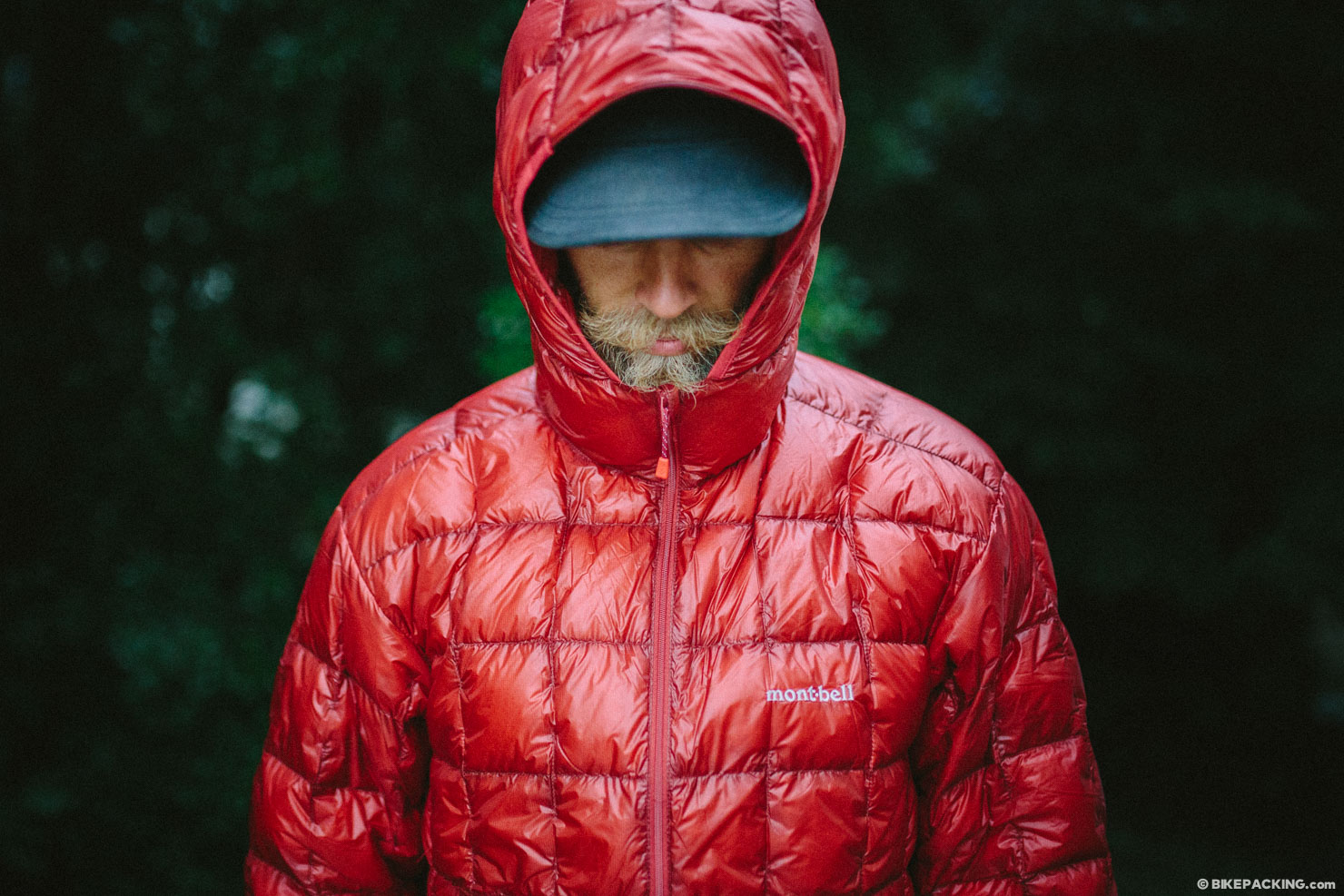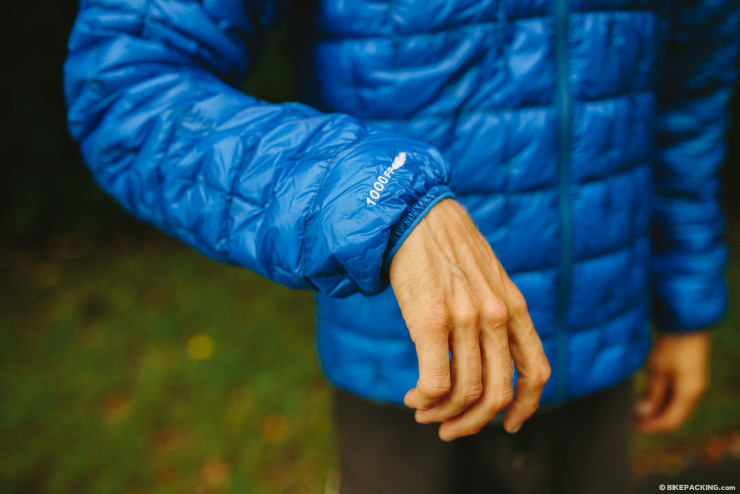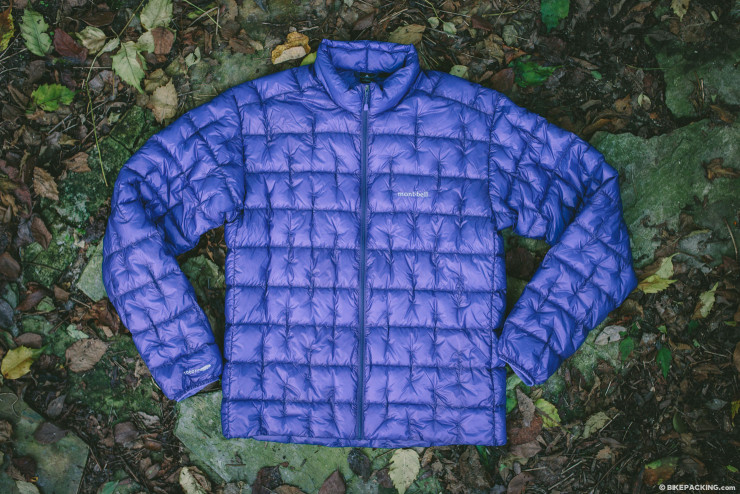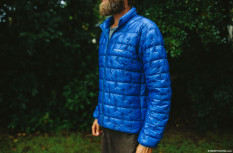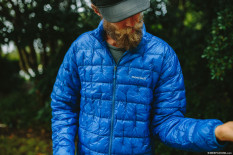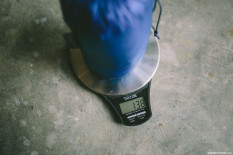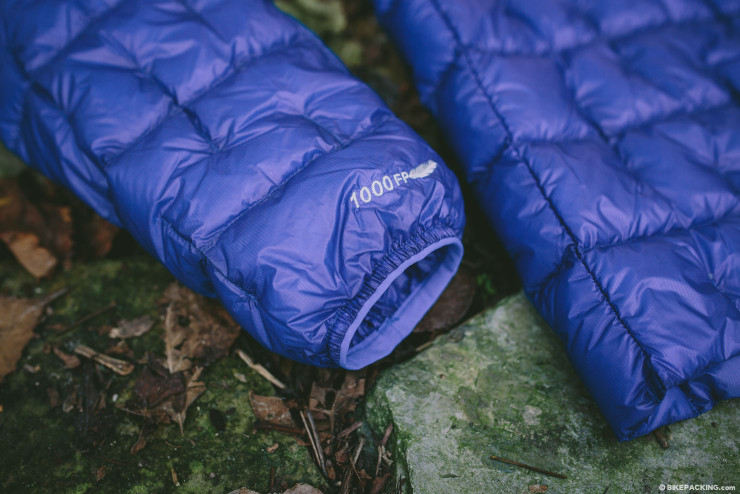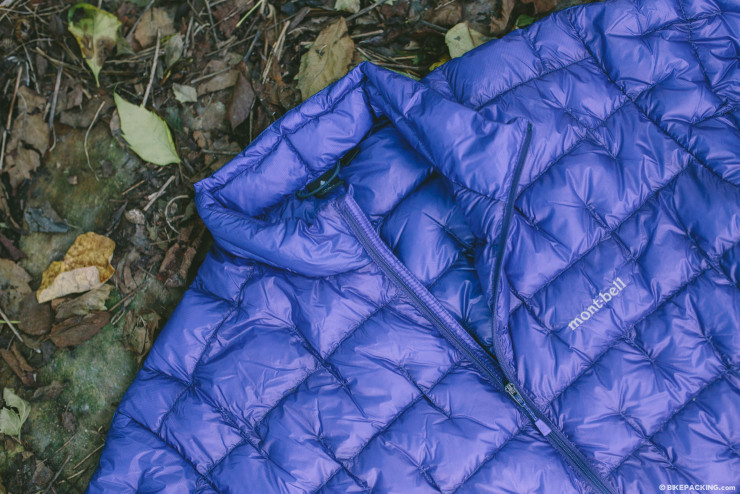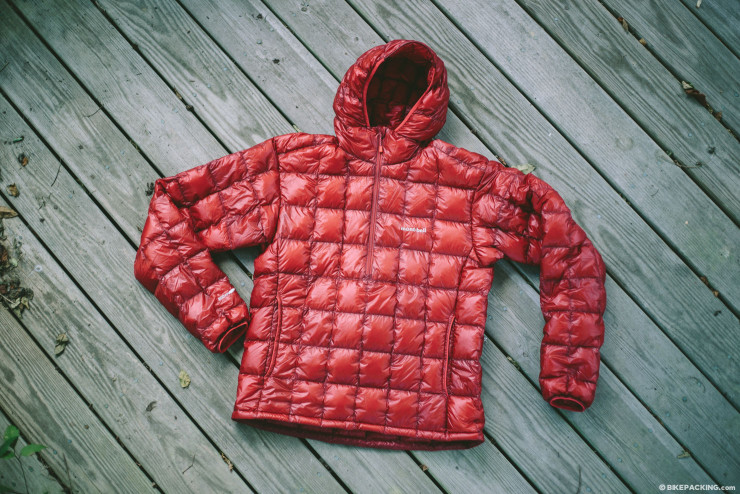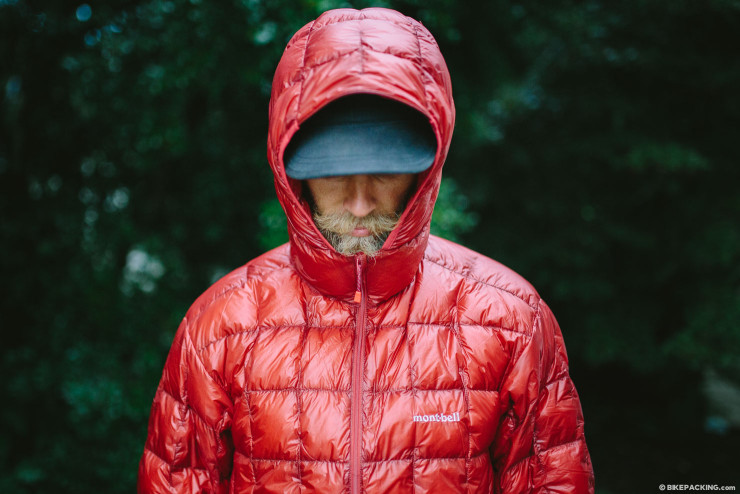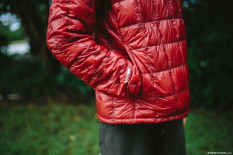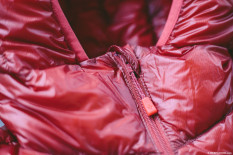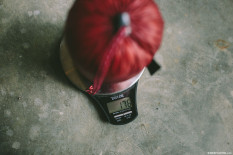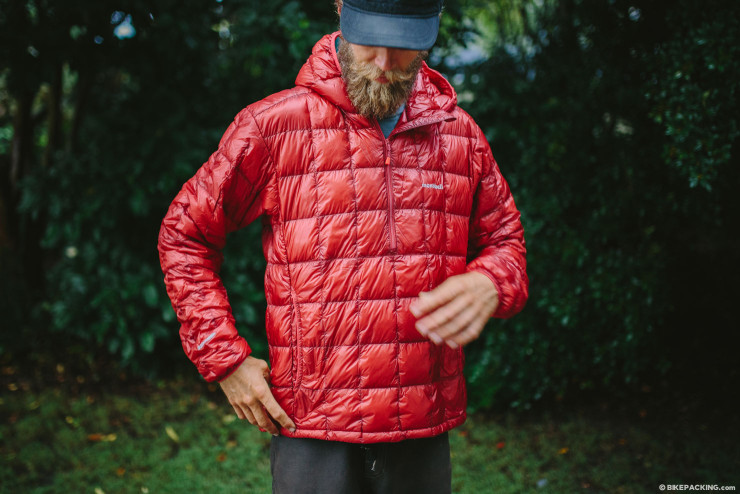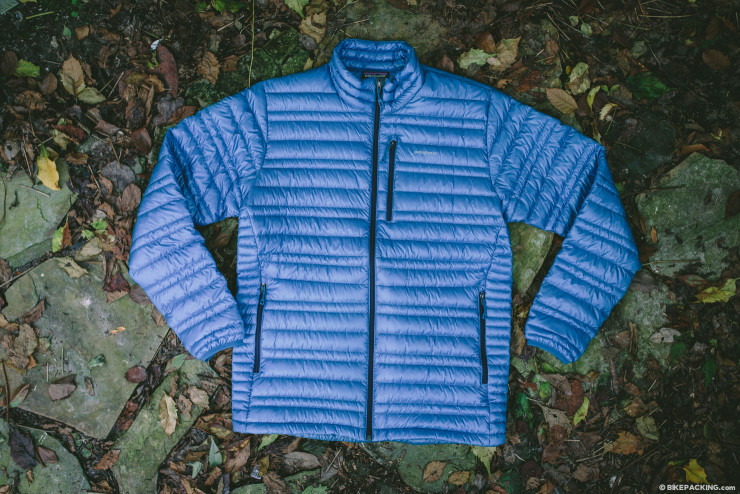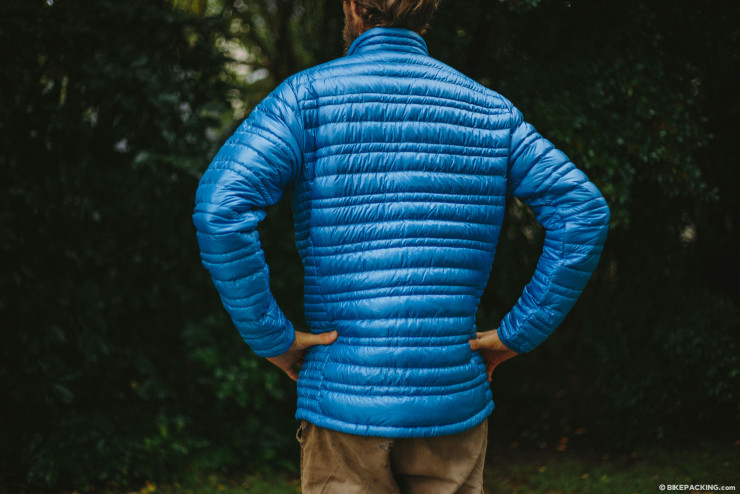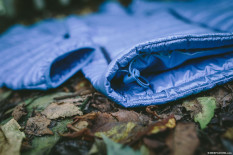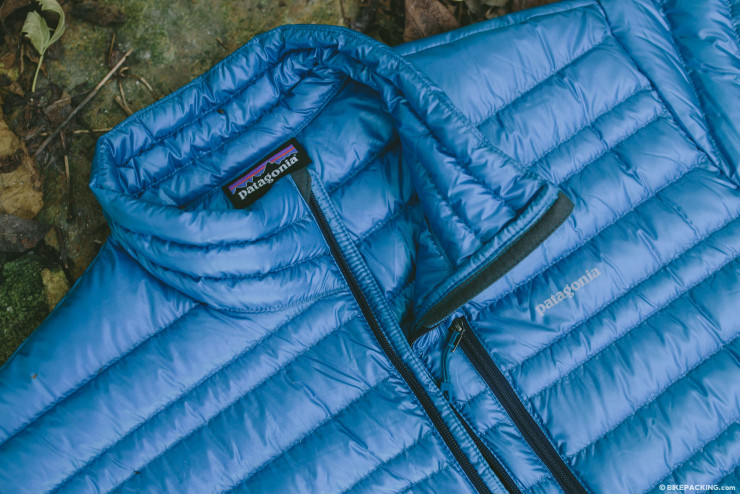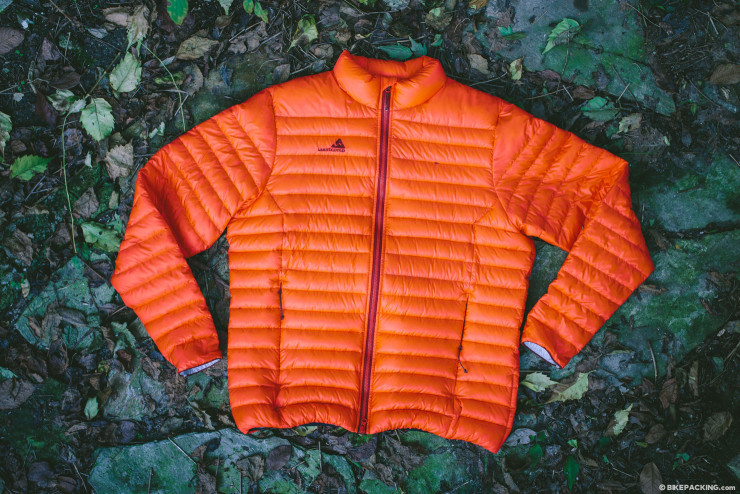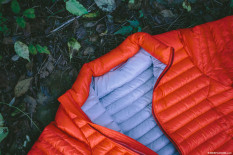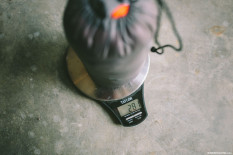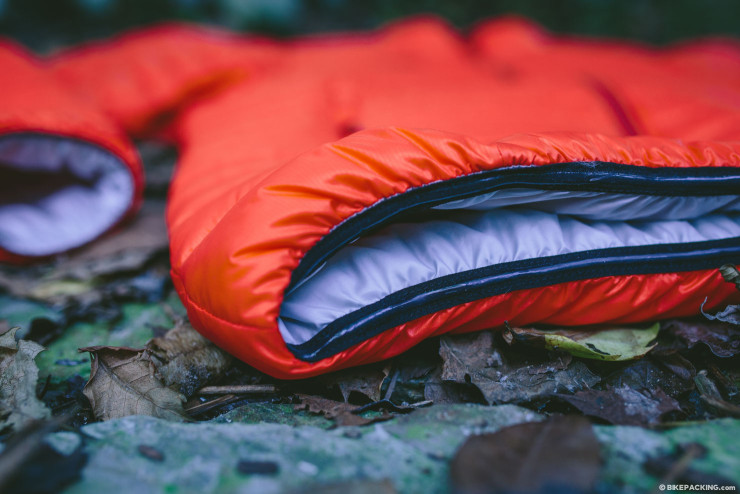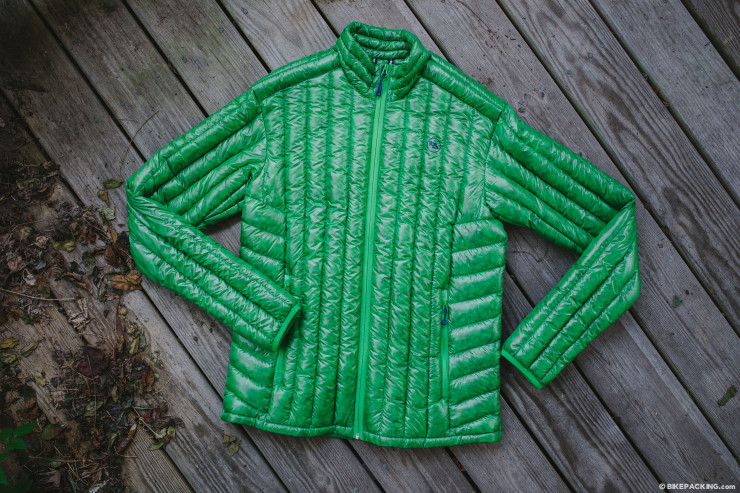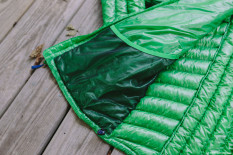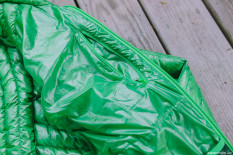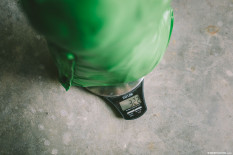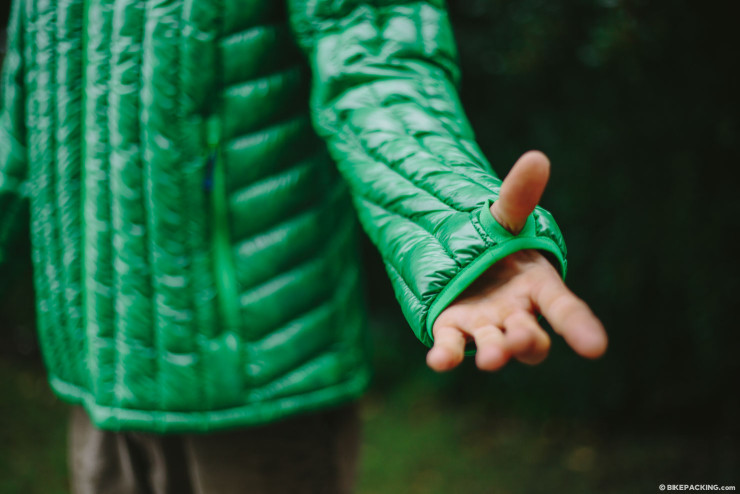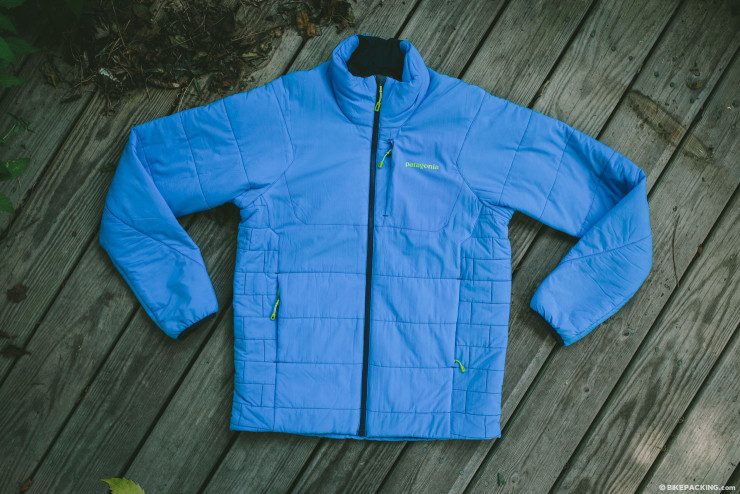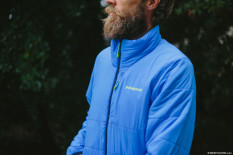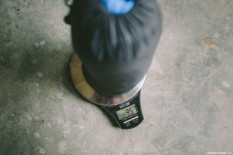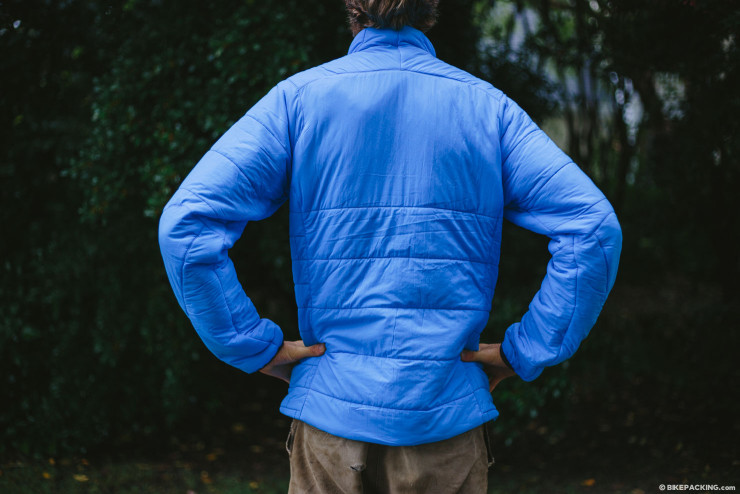Ultralight Down Jackets: Packing Heat, 5 Under 12
As fall gives way to winter, a packable ultralight down jacket is the secret weapon in a bikepacking gear arsenal. Read on to find out why we love them so much… and our impressions of five toasty jackets, ranging from 5 to 12oz (140-350g).
Recommending clothing for bikepacking is a complex endeavor, mined as it is with caveats. Advice rests on conditional elements such as local climate, personal needs, aesthetic preferences, and financial constraints. However, it’s hard to argue the value of investing in an ultralight, compressible, and insulating jacket. This minimal piece of gear can make the difference between staying home, and extending your adventures well into the colder months – keeping you toasty warm in the process.
An ultralight down jacket is essential.
The classic mantra of packing philosophy goes something like this: If, at some point on the trip, you didn’t wear everything you brought, you brought too much. It’s a good doctrine, granted it shouldn’t always be taken literally. But it does call to mind a valid point about a ‘puff’. A down jacket can play a major role in a layered approach, whether it’s under a hard shell, or as added insulation over a baselayer. It’s also a viable means of increasing the temperature rating of your sleeping system. Suffice to say, a puff jacket can be an essential piece of a well thought out kit. If you have one, you’re bound to find uses for it on all kinds of trips. Lastly, let’s not forget the feel-good factor: down jackets are so cosy it’s hard not to smile when you’re wearing one.
Why down works.
- Warmth: Goose down makes up the fluffy undercoat that provides warmth and increases buoyancy for geese. The structure of down provides insulation by trapping thousands of tiny air pockets within its fine fibers. Down is also breathable, allowing unwanted moisture to be wicked away from the body for evaporation. There are not many other materials that have comparable properties.
- Weight: Ounce for ounce, down is the warmest insulation available for clothing and gear. Although synthetic fiber insulation has come a long way, the amount of down it takes to provide adequate insulation is still unmatched.
- Packability: Down is also highly compressible and can be squished into a tight compact forms. However, it retains its loft and is able to bounce back to its original shape.
The Down-sides
Down is great, until it gets wet. That is probably its biggest downside. Once it does get wet, it not only loses it’s insulating properties, but it becomes heavy and can be slow to dry. Cleaning down garments requires special care; most suggest a mild down-specific cleaning product, front-loading washer, and other particulars when it comes time to clean. Lastly, down is expensive. On the flip-side, there’s synthetic; it’s not as cozy, but sometimes practical. For comparison, we’ve also included a review of one of our favourite synthetic options (at bottom).
What is Fill Power?
The quality or effectiveness of down is rated according its fill power. Fill power is determined by measuring how many cubic inches can be filled with one compressed ounce of down and is expressed as cubic inches per ounce (in³/oz). For example, if one ounce of compressed down lofts to a volume of 800 cubic inches, it is said to have a lofting power of 800. The higher quality the down, the higher its fill power. Since high quality down requires fewer ounces to maintain the same level of warmth, it has a better warmth to weight ratio than that of a lower quality down, and can be used to create garments that are substantially lighter in weight. All of that being said, fill weight still matters.
Take note
There are some sustainability and animal welfare concerns (live plucking, for example) surrounding the harvesting of down or manufacturing of down-filled products. If this is a matter of interest to you, pay attention to where companies source their down, and to what standards they adhere. Nau has started a line of jackets that use recycled down, and Patagonia initiated a standard called 100% Traceable Down. Other companies note their sources as well. More details on each below.
5 Ultralight Down Jackets Under 12 oz
For this gear roundup, we’ve tested out five jackets that range in weight, warmth, and expense. You’ll find our impressions on each jacket, as well as a comparison chart. All of these jackets are in the ‘sweater weight’ category, meaning they are great for moderately cold temperatures, and temps that dip below freezing when paired with layers. The jackets are ordered by weight, starting with the lightest.
Montbell Plasma 1000 Down Jacket
The Plasma 1000 is the only jacket we reviewed that uses 1000 fill power down, and it is indeed the featherweight of the group. Its design is minimalistic in the extreme, sporting no hood, no pockets, and no adjustment cords. But, what it does have is a great design and an impressive warmth to weight ratio. This jacket is designed for ultralight backcountry explorers who are seeking a moderately warm, microweight, insulating layer in a very straightforward package.
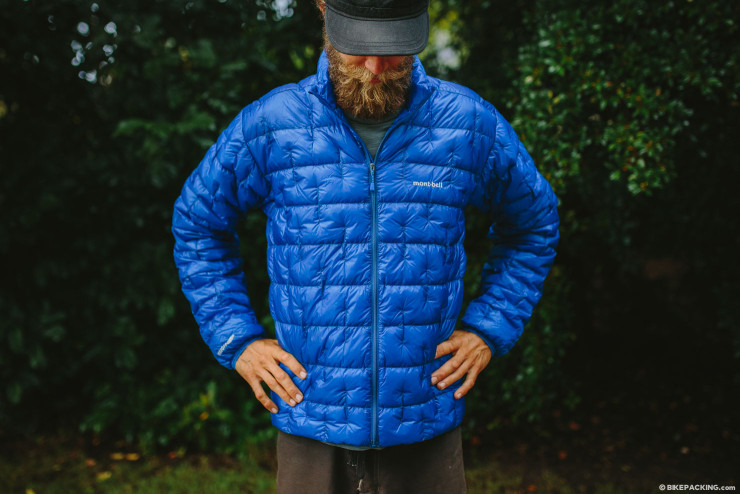
The Plasma 1000 has a form fitting design which allows additional layers to be combined as the temperature necessitates. One no-compromise feature that was included in its design is a minimal draft tube to prevent a cold air from entering at the zipper. While the jacket’s wrist cuffs are elastic, the waist is not; cold air is halted at the wrist line, but there’s nothing preventing it from slipping up the bottom of the jacket. The Plasma also has a short hem line, which is perfect when layering, but may prove a little drafty if worn on its own. The jacket has a sewn through construction, which according to Montbell, keeps the down where it’s needed and the jacket as light as possible. In addition, the Plasma has Montbell’s standard DWR (Durable Water Repellant) treatment.
- Weight (as tested): 4.87 ounces/138 grams
- Fill Power: 1000 Fill Power Goose Down
- Fill Weight: 1.6 ounces/43.4 grams
- Shell Material: Gossamer 7-denier nylon with DWR finish
- Stuff sack: Included
- Price: $269
BIKEPACKING.com’s Take: “The Plasma 1000 is an incredible jacket when packing light or layering during shoulder seasons. It’s also one of the best looking of the bunch, with a unique quilt pattern and a flattering cut. By itself, the Plasma 1000 may not be enough for sub-freezing temps, but as an insulating layer, it’s one of the best and lightest options out there.” – Logan
Montbell EX Light Anorak
Montbell again has once again created an artful take on the minimalist jacket. The Ex Light Anorak is the second lightest jacket of those reviewed; it includes a few more bells and whistles that its lighter brother, Plasma 1000. A through ‘kangaroo’ pocket acts as a great hand warmer, and a drawstring, accessible inside the pocket, allows the waist to be snugged up to prevent draft. The Ex Light Anorak also has a perfectly designed ‘Eskimo style’ hood that has no drawcord, but a bit of lateral elastic that keeps it cozy while allowing the zipper to provide a just enough adjustment.
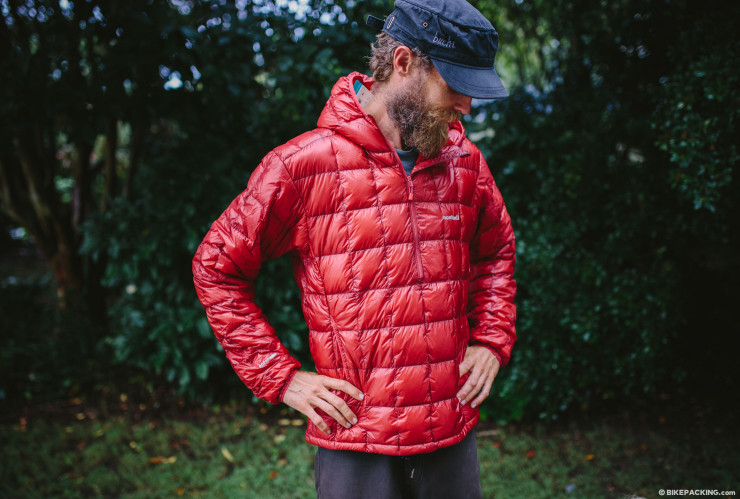
The Anorak has a nice style, although it’s fit is not quite as trim as that of the Plasma. However, it does seem like a good balance for any well planned layering system. With over 35% of its weight in down fill, the Anorak’s great warmth to weight ratio is a major bonus for the gram conscious bikepacker. In addition, the Anorak has Montbell’s standard DWR (Durable Water Repellant) treatment.
- Weight (as tested): 6.21 ounces/176 grams
- Fill: 900 Fill power goose down
- Fill Weight: 2.2 ounces/grams
- Shell Material: 7-denier Ballistic Airlight rip-stop nylon
- Stuff sack: Included
- Price: $219
BIKEPACKING.com’s Take: “This is a choice piece for a minimalist backcountry bikepacker. The hood made a big difference when temps dropped below freezing. It can pair well with a down quilt for sleeping, and it packs up the size of a can of beer. For the key features Montbell was able to keep within a ridiculously lightweight package, the Anorak is hard to beat at 220 bucks.”
Patagonia Ultralight Down Jacket
The Ultralight Down Jacket combines 800 fill-power with a 15-denier Pertex Quantum shell, which is slightly more burly than that of the 7d fabric use in the Montbell jackets. The UL features alternating sized horizontal baffles with sewn through construction on the back, front, and sleeves. Elastic cuffs and a draw cord at the waist keep out cold air. The overall design of the jacket is rather long, so it may be a good option for the long-waisted amongst us.
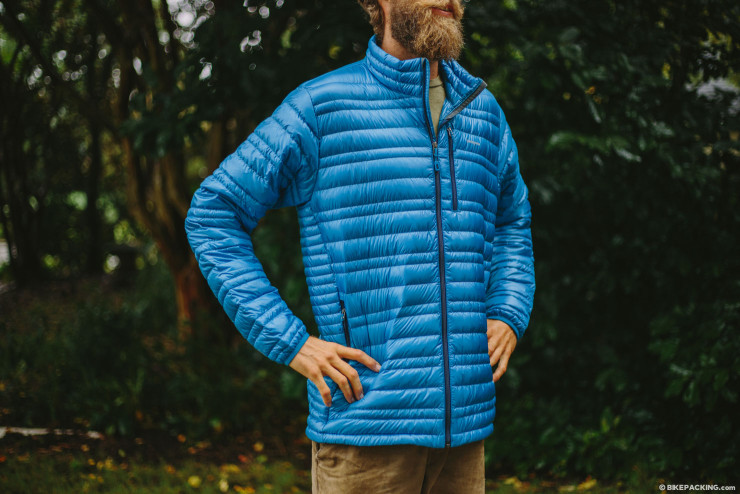
The amount of 800 fill power down used in the UL is unspecified on the website, but overall it feels like a very warm jacket. According to Patagonia, the tight channel pattern paired with the “right” amount of down creates a jacket that is “best used in moderate temperatures”. The jacket has three pockets… two zippered handwarmers and one zippered chest pocket, which doubles as the jacket’s stuff sack. One very cool feature is that the jacket can also be stuffed into one of the handwarmers, converting it into a travel pillow.
Patagonia was the first major brand to announce a 100% Traceable Down standard. Within all of their down garments, they use a European goose down that can be traced back to birds that were never force-fed and never live-plucked.
- Weight (as tested): 9.67 ounces/274 grams
- Fill: 800-fill-power 100% Traceable Down
- Fill Weight: Not Specified
- Shell Material: 15-denier nylon ripstop Pertex Quantum with DWR finish
- Stuff sack: Stuff into left pocket
- Price: $299
BIKEPACKING.com’s Take: “For the amount of features and warmth this jacket offers, it’s amazing how lightweight and small it compresses. I love things that serve multiple purposes, and it’s pretty cool that Patagonia integrated a large self-stuffing pocket that’s intended as a travel pillow. Better yet… it’s actually comfortable as a pillow.”
Westcomb Chilko Sweater
Westcomb’s Chilko Sweater is the only jacket featured in this post that’s not made in China. In fact, it was made in Vancouver, Canada. According to Westcomb, the nearby Pacific Coast Mountain Range provides inspiration and context to design, construct, and test their gear.
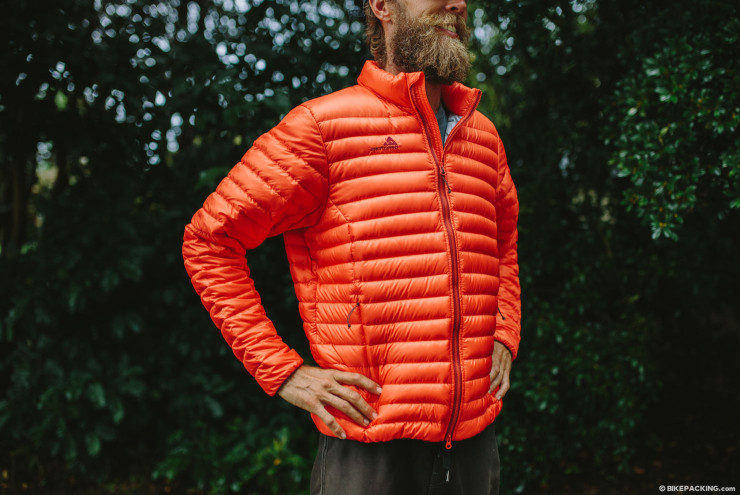
The Chilko Sweater provides a unique feature set. For starters, it uses the thickest shell fabric of the group reviewed here, a 20-denier micro-ripstop Pertex Quantum. It also features a hefty YKK 2-way Vislon zipper, which is pretty burly in comparison to some of the other, more minimalist jacket designs. In addition the Chilko has two hand warmer pockets, elasticized cuffs, and a stretchy waist that’s backed with a sticky rubber strip that keeps the waistline from working its way up your back. The jacket contains an unspecified amount of 900 fill-power Hudderite white goose down, which is claimed to be ‘responsibly raised’.
- Weight (as tested): 9.91 ounces/281 grams
- Fill: 95% 900 fill power HUTTERITE goose
- Fill Weight: Not Specified
- Shell Material: Pertex Quantum 20D micro-ripstop nylon w/ DWR finish
- Stuff sack: Not included
- Price: $360
BIKEPACKING.com’s Take: “The Chilko Sweater is an impressive garment; one of my favorites of the group. It feels substantially less fragile than some of the other down jackets. It’s also one of the warmest. It has a nice trim fit and, believe it or not, I really like the orange, AKA ‘Vermillion’… although it does come in several other colors including a nice ‘Leaf’ green and earthy ‘Bean’ brown.” – Logan
Big Agnes Meaden
The Meaden is the heaviest of the jackets we reviewed, which may be attributable to the fact that it’s a size large (all of the others tested are size medium). The Meaden is also the warmest jacket of the group. Big Agnes claims that the unique vertical baffle construction contours better to your body and results in better heat retention.
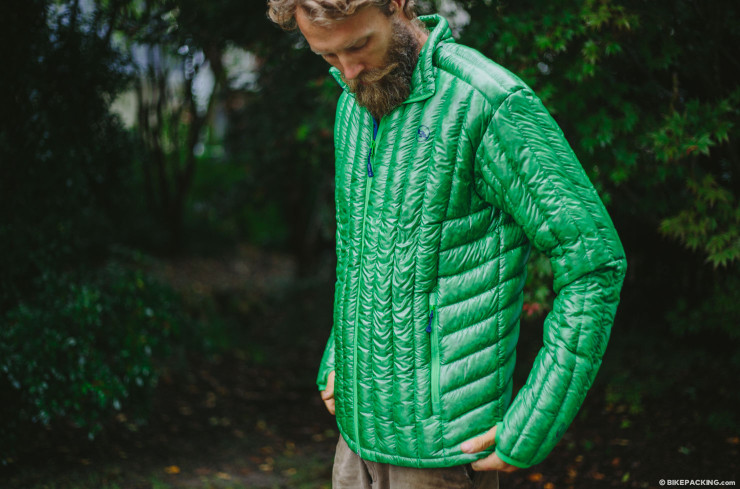
The Meaden is packed with useful features such as elasticized cuffs with thumb cutouts, a waist drawcord, and large interior mesh pockets. The Meaden also stuffs into its own zippered interior pocket for storage. Overall the Meaden fits well and the angled baffles on the sides are a nice touch that give it a slender look. The jacket is fairly long in comparison to the other jackets mentioned here, save the Patagonia UL. The Meaden is constructed from a very light and semi-transparent shell fabric. It’s thickness is unspecified.
Worth noting too is Big Agnes’s decision to adopt Downtek across its product range. As we mentioned above, down is great, until it gets wet. BA’s answer to this conundrum is through the use of DownTek, down treated with a water repellent that allows it to retain its ability to loft and insulate, even when wet. DownTek also adheres to the Responsible Down Standard which claims to prohibit the live plucking and force-feeding, and several other sustainability points.
- Weight (as tested): 11.36 ounces/322 grams
- Fill: 850 fill power DownTek™ water repellent down
- Fill Weight: 6oz/162g
- Material: 10 Denier Pertex shell
- Stuff sack: Stuff into left pocket
- Price: $379
BIKEPACKING.com’s Take: “The Meaden is one of the few jackets out there that uses the baffle design to give the jacket a unique and athletic look. The Meaden is also extremely warm… and the Down Tek seems like a great concept, although I am usually careful not to get it wet. My only concern is the durability of the thin nylon shell. That being said, my partner Gin is very hard on clothing, and her Sunshine, cut from the same material, has taken a beating and is still going strong.”
Comparison and Conclusion
As with our other comparative posts, every product here was chosen and included for a reason; they are all high quality jackets and serve different niche uses as an essential piece of gear. That said, if there has to be a winner, the Montbell Ex Light Anorak gets our top pick due to it’s combination of key features, ultra light weight, and incredibly small pack size… all of which comes at a great price point. The Westcomb Chilko Sweater and Patagonia UL tie for a close second; the Chilko for its more durable 20-denier shell fabric, great fit, and warmth… and the Patagonia for it’s unique features and Traceable Down standard. The minimalistic Plasma 1000 is a fantastic choice for those looking for a super ultralight option for bikepacking in more moderate climates, but won’t keep you as toasty as the Big Agnes Meaden, the warmest of the group.
Inevitably each jacket has its pros and cons, so consider all the options based on where you’ll be traveling, whether you intend to layer, your budget, and concern for durability.
| Product | Weight | Fill Power | Fabric Denier | Warmth Rating |
|---|---|---|---|---|
| Montbell Plasma 1000 (M) |
4.9 oz
138 g
|
1000 | 7d | #5 |
| Montbell EX Light Anorak (M) |
6.2 oz
176 g
|
900 | 7d | #3 |
| Patagonia Ultralight Down (M) |
9.7 oz
274 g
|
800 | 15d | #4 |
| Westcomb Chilko Sweater (M) |
9.9 oz
281 g
|
900 | 20d | #2 |
| Big Agnes Meaden (L) |
11.4 oz
322 g
|
850 | 10d | #1 |
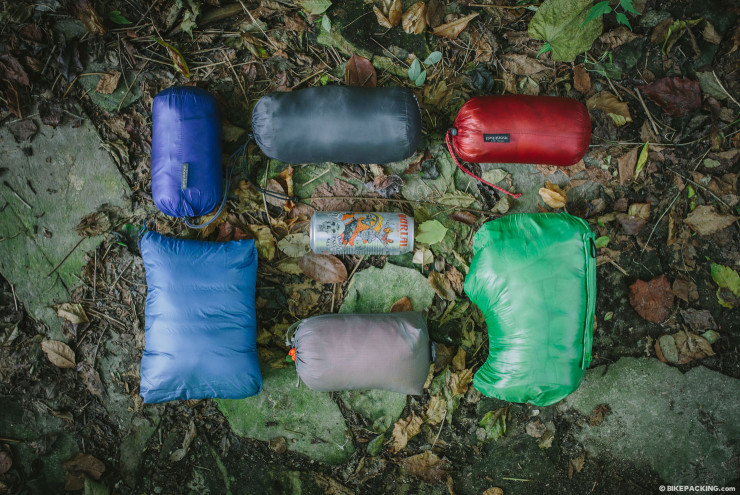
+1 for Synthetic
Synthetic insulation technology is continuously evolving and has become much more sophisticated over the years. There are numerous types of synthetic insulation available, and even though they are mostly heavier and bulkier that down, several come close to in the warmth-to-weight game. Unlike down, synthetic insulation, by the nature of the material, is water-resistant. As a result it will dry faster and still provide some warmth when wet.
Synthetic insulation is also hypoallergenic. And because synthetics are not a product of animals, there could also be a significant case for sustainability (relative to animal welfare and the carbon footprint of production).
Patagonia Nano-Air
Patagonia describes their Nano-Air‘s Fullrange Insulation as, “An insulation breakthrough… [it] is warm, stretchy and so breathable, you can wear it for the entirety of any highly aerobic start-stop mission in the mountains.” The range of motion the Nano-Air is one of its most impressive features. The shell fabric itself is not too stretchy, it’s the insulation and the way the jacket is constructed. The soft, supple feel and full mechanical stretch allows for an athletic fit over baselayers and an uninhibited range of motion.
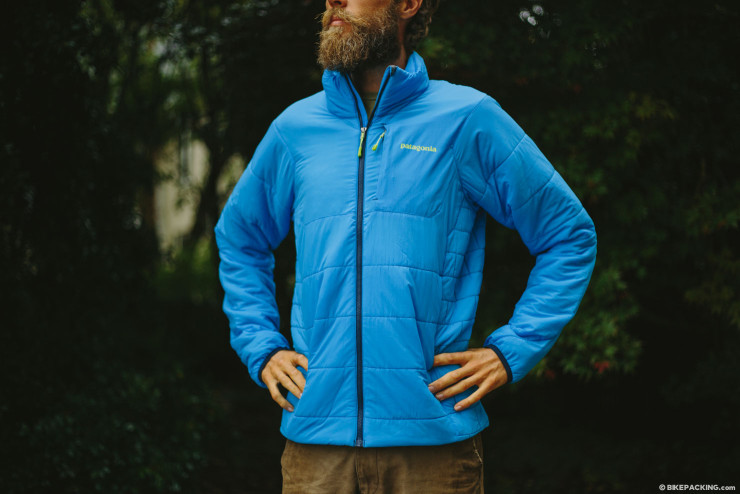
The Nano-Air also features two hand warmer pockets, a chest pocket, and a dual-adjustable drawcord hem to seal in warmth. As you can see in the group photo above, the Nano-Air (second from the left on top) packs to compact parcel, albeit far less compressible than each of the down jackets.
- Weight (as tested): 12.59 ounces/357 grams
- Fill: FullRange™ 100% polyester stretch insulation
- Fill Weight: Not Specified
- Material: Ripstop nylon with DWR (Durable Water Repellant) finish
- Stuff sack: Not included
- Price: $249
BIKEPACKING.com’s Take: “Although not as light or compact as the down jackets we tested, the Nano-Air is impressive. It’s very warm and the wet weather edge combined with the range of motion that this jacket offers, make a good case for Patagonia’s Fullrange synthetic insulation.”
Please keep the conversation civil, constructive, and inclusive, or your comment will be removed.






